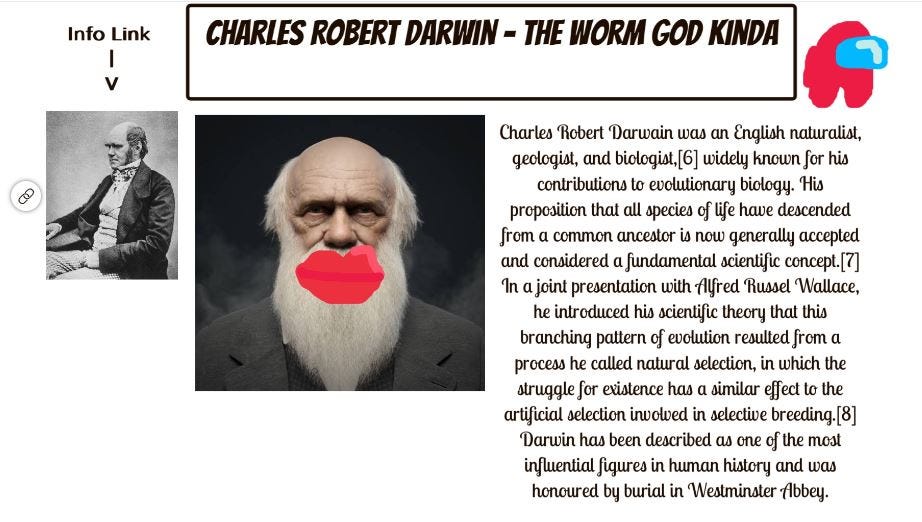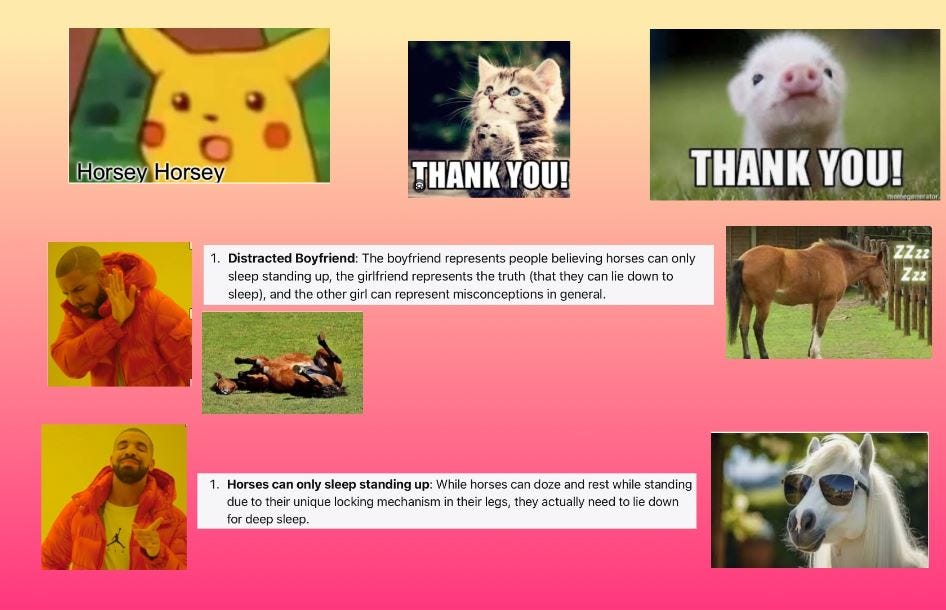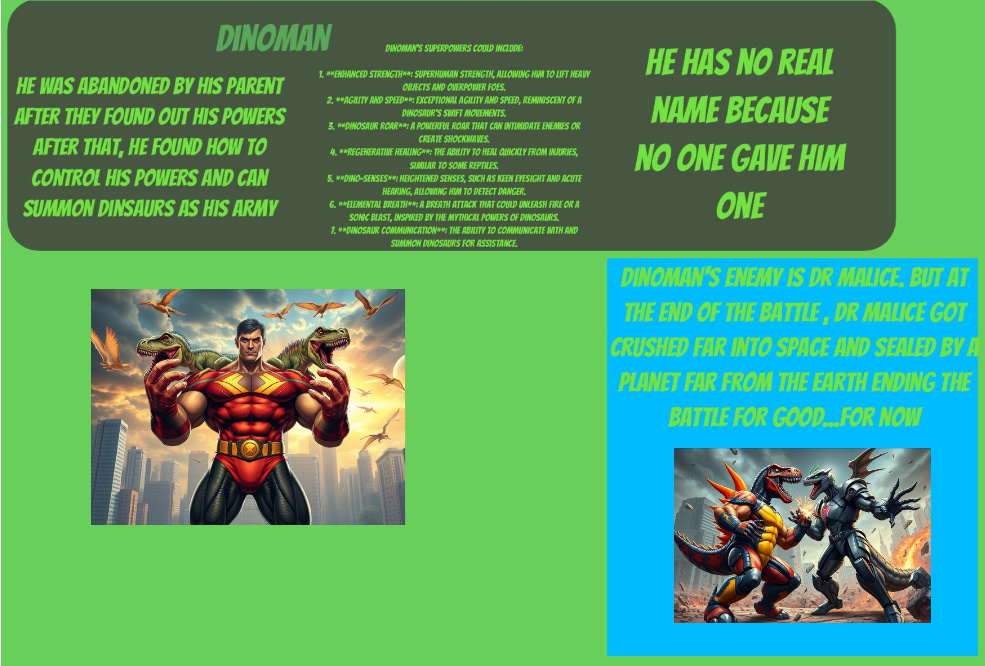I’ve just finished two separate cohorts of Learning in Depth in two very different contexts. Now it’s time to dig into how things went and how it could have gone better.
If you’re not sure what LiD is, here’s the short version: a project-based learning program in which students are randomly-assigned an everyday topic that they are expected to learn about using Kieran Egan’s cognitive tools. The twin goals are for students to achieve deep knowledge of and appreciation for their topic, and also to learn research methods that can help them bring any new topic to life. If you’re curious, I’ve written more about LiD here and here.
LiD in School - the Highlights
I’ve been running a Learning in Depth cohort with a select group of students as a part of an after-school interest group at the primary school where I work. It has been really interesting to see how it all works in person. I had some notable successes, but some difficulty stringing those successes into a cohesive unit.
I worried that my students would struggle to do LiD using a second language but they were fine and if anything, they probably improved their English to boot. Each week there was a one-hour session with a task, usually based on one of Egan’s cognitive tools. Often the tasks were relatively simple, like finding a video about your topic, but some tasks were more complex: creating a meme about your topic or making a thorough, categorized list of examples.1
You can see how the work reflects a combination of partially-digested knowledge and personal observations about the topic, littered with trivia and gossipy commentary. This is very indicative of Egan’s Romantic stage of understanding- the obsession with the odd, extreme and emotional aspects of a topic are vital for sense-making, particularly when learners are still developing a more detailed and interconnected worldview.
The final task for my school cohort was to create a superhero using what the students had learned about over the course of the year. There were some low-effort responses, but I was very proud of their work overall. I will consider adding an extra step next year where they use the superheroes for a story or comic.
We ended with a little section I called the Thesis Defense. There were no theses, but more of a Q & A where students could describe the most interesting things they’d learned over the course of the year and try to field questions from their classmates, “the defense panel”. Students were allowed to ask any question of genuine interest (not just stumpers to make people look foolish), and if the defender didn’t know the answer we would try to look it up as a class.
A key element was that this was not a required task. Students only attempted a defense as an additional challenge if they felt confident about their topics. In the end we had three (of fourteen) students who braved the committee. We might have had more but we ran out of time.
The Students: Who sank and who swam?
This cohort was demanding. Part of this is due to the wide-ranging demands of the tasks. The students need to understand and use Egan’s cognitive tools to do unfamiliar tasks. The language demands were significant, too. The students are all native Chinese speakers and yet all of their output was in English.2
The students who tended to perform best had a lot of general knowledge or a high degree of English fluency and vocabulary, or both. I think there are two factors at work here: first, basic language barriers and knowledge dividends. Research becomes far easier when the information you encounter feels familiar and congruent with what you already know. I think most readers will be familiar with the feeling of wanting to learn more about a subject only to be defeated by walls of esoteric jargon - now imagine that, but in Chinese. I will discuss some possible solutions below.
In addition, there was the technical aspect. I used Seesaw as the main platform and although the students were familiar with it in a traditional class setting I was asking them to use it creatively to do non-traditional tasks. For those who aren’t familiar, Seesaw is a classroom app designed for students to be able to upload and share their work. It’s useful for voice recording and doing quick tasks with relatively simple student output. However, formatting issues and the guardrails designed to prevent students from messing around make it difficult to use Seesaw for more open-ended tasks.3 Students who knew the system well found it easier upload their information but it was constraining for everyone.
Aside from familiarity with Seesaw, another factor that benefitted students was doing online project-based tasks outside of school. The meme generators, the digital artists, the kids with their own Youtube channels all tended to dive in quickly and get further, faster than their classmates. I’m not sure whether this was related to general digital literacy or more about experience with creative hobbies or both.
It was also interesting to see what qualities didn’t predict success:
Students with the highest exam results didn’t necessarily engage more deeply or have it easier than the rest of the group.
Students that I would characterize as highly conscientious tended to complete a higher percentage of the tasks but the quality of their work wasn’t noticeably better than the rest.
Students who liked the topic which they were randomly assigned didn’t seem to come up with more meaningful or in-depth work than those who outright disliked their topics. It did seem like certain more abstract or general topics (water or games) may have been harder to engage with, requiring careful focus in order not to be overwhelmed.4
This all begs a rather obvious question:
What does it mean to be successful with LiD?
Learning in Depth is ungraded, with no mandatory measurable outcomes. The idea is provide students with an opportunity to develop deep knowledge of a subject and to show that anything can be interesting if you learn enough about it.
To the extent that I am judging my own success in this cohort, I am looking at two main factors: Are the students struggling? And are they engaging deeply with their topic?
It’s pretty easy to gauge struggle. You can ask the students, you can look at completion of tasks, you can watch how they spend their time. Struggle isn’t necessarily a problem, but if it prevents students from learning then it becomes a problem.
To determine how deeply students are learning you need to look at the quality of their work and listen to their discussion. Ask them pointed questions, see if they are generating interesting insights, do they feel like they are learning anything?
By both of these criteria, ease and stimulating deep knowledge, I feel as though I failed to deliver what I was hoping for. I do think that that all of the students learned some facts, and they may have walked away with a greater appreciation for their topics, but they didn’t connect those facts into a deeper network of understanding.
LiD in School: Juggling Priorities
Many of the problems I faced with this cohort seems to stem from its impromptu nature and the fact that I was using a group earmarked for something else. When I announced it on the blog I called it a guerilla campaign and it certainly felt like a battle at times.
Our attention was constantly shifting between LiD and the other tasks required of the group. This disturbed the pace and structure and made it harder to develop routines for approaching the different LiD tasks. Also, the fact that students didn’t know what they were signing up for made it more difficult to keep them onboard and cater to their needs.
In retrospect Seesaw wasn’t the right platform. It is too constricting for both the teacher and the students. It also doesn’t have any built-in methods for developing portfolios, which is an important part of LiD for gathering and organizing information to develop better understanding.
LiD is dead. Long live LiD!
I’m going to try LiD again next year. I don’t think the problems are inevitable, but they do provide some evidence that you can’t just ‘wing it’ with LiD and expect miracles.5 Some students will be moving on but I will get to keep several students who tried it last year and take on others who are giving it a go for the first time. I’m making Learning in Depth official, explicitly asking students whether they’d like to do LiD and making that our focus. This should help increase buy-in and limit distractions.
I’m going to change the platform to Google Classroom which should be a much better fit for our needs. It’s far more flexible and portfolios can be built in. Most importantly, it’s the same interface we’ll be using for our online cohort and thus I’ll be better able to take what we’ve built and adapt it to an in-school and second language format. We have such great, simple step-by-step instructions for the online cohort that I didn’t use because I was recreating everything for the Seesaw platform- one of my biggest regrets.
Finally, and most importantly the program needs more structure. I will definitely break the tasks down into smaller parts and provide more examples (one of the benefits of running a second time!). I am also considering whether to constrain the topics (animals only?) in order to allow for more tightly-focused tasks. At the cost of variety, it would limit the vocabulary requirements and allow me provide targeted language support. I also want to include more opportunities for students to do something with the knowledge they’ve gathered.
I have a lot of ideas about structures that I’ve worked out with Shelley and Alessandro when planning for the LiD online program. I will share more on this in my next post, a LiD post-mortem part 2 next week, where I will cover our larger and more intense online cohort. Stay tuned!
An example of using lists might be a set of pictures of different types of leaves, or categories of ships. Deciding on the categories is the real trick! Learning what makes memes function was also an interesting task.
Highly selected for strong English language ability, but still.
Doesn’t prevent students from messing around, though.
Disclaimer: This is all based on my own personal observation within a tiny cohort. I know the students well but I didn’t do any analysis on numbers or outcomes here. I do plan to gather more data in the future using more objective measures.
Getting to the point where anybody can wing it is a goal. Hopefully I can make the mistakes so you don’t have to.






Fascinating thanks for sharing in depth your attempt to drive this kind of deeper, constructivist, project-based learning learning and learnings.
Btw did you get to visit Alpha and have any additional comments yet?